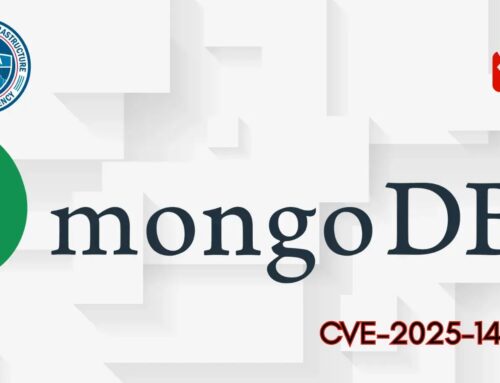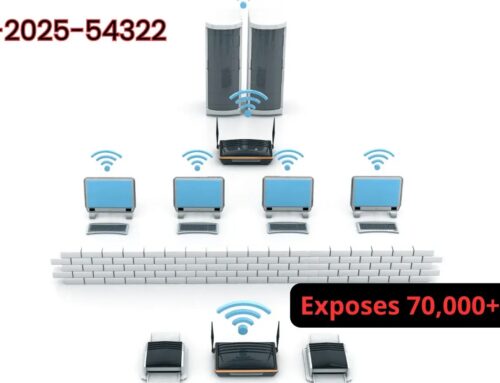
Cisco IMC Virtual Keyboard Video Monitor Let Attacker Direct User to Malicious Website
In the intricate landscape of network infrastructure and data center management, the security of administrative interfaces is paramount. A single vulnerability in these critical control planes can open the door to significant organizational risk. Recently, Cisco disclosed a high-severity open redirect vulnerability within the Virtual Keyboard Video Monitor (vKVM) component of its Integrated Management Controller (IMC) system. This flaw, while seemingly simple, carries the potential for sophisticated social engineering attacks, enabling threat actors to redirect unsuspecting users to malicious websites.
Understanding the Cisco IMC vKVM Vulnerability
The vulnerability, officially tracked as CVE-2025-20317, has been assigned a CVSS 3.1 base score of 7.1, categorizing it as high-severity. At its core, this is an open redirect vulnerability specifically affecting the vKVM component used for remote management of Cisco IMC devices. This means that an unauthenticated remote attacker could craft a specially designed URL that, when clicked by an administrator or user, would redirect them to an arbitrary malicious website of the attacker’s choosing.
How the Vulnerability Works: The Open Redirect Threat
An open redirect vulnerability occurs when a web application accepts untrusted input that specifies a URL and uses that URL in a redirect operation without proper validation. In the context of Cisco IMC vKVM, an attacker could leverage this by:
- Crafting a malicious link that appears to be legitimate, perhaps containing the actual Cisco IMC domain, but subtly embeds a redirect parameter pointing to a different, attacker-controlled domain.
- Sending this crafted link via email, messaging platforms, or other social engineering vectors to administrators or users of affected Cisco IMC devices.
- When the user clicks the link, they are automatically redirected from what they perceive as a legitimate Cisco IMC page to a malicious site.
The objective of such redirection is often credential harvesting, phishing, or even the delivery of malware. Users, expecting to land on a secure Cisco IMC login page, might unwittingly enter their credentials into a fraudulent site designed to mimic the legitimate interface. This makes CVE-2025-20317 a significant concern for organizations relying on Cisco IMC for server management.
Impact and Potential Exploitation Scenarios
The primary impact of this vulnerability is the facilitiation of phishing and credential theft. Consider these potential exploitation scenarios:
- Credential Harvesting: An attacker redirects an administrator to a convincing fake login page for Cisco IMC. The administrator enters their credentials, which are then captured by the attacker.
- Malware Delivery: Instead of a fake login page, the user is redirected to a site hosting exploit kits or drive-by downloads, leading to the compromise of their workstation.
- Information Disclosure: The malicious site might be designed to extract other sensitive information from the user through deceptive forms.
- Loss of Trust: Successful attacks can erode user trust in official communications and management interfaces.
Given that IMC is often used for managing critical infrastructure, the compromise of administrative credentials could grant an attacker deep access to server environments, potentially leading to data breaches or service disruptions.
Affected Products and Versions
Cisco IMC, the Integrated Management Controller, is a foundational component for managing Cisco’s server infrastructure, including Cisco UCS (Unified Computing System) C-Series Rack Servers. Organizations utilizing these systems should review their configurations and installed versions to determine susceptibility to CVE-2025-20317. Specific affected versions and remediation details are typically provided in Cisco’s official security advisories.
Remediation Actions
Mitigating this open redirect vulnerability is crucial for maintaining the integrity and security of your Cisco IMC deployments. Organizations should prioritize the following actions:
- Apply Patches: The most direct and effective remediation is to apply the security patches released by Cisco for affected IMC versions. Always consult the official Cisco Security Advisory for CVE-2025-20317 to identify the specific software updates required.
- Educate Users: Implement robust security awareness training for all personnel, especially administrators, covering the dangers of phishing, suspicious links, and the importance of verifying URLs before entering credentials. Emphasize hovering over links to check the true destination.
- Implement Multi-Factor Authentication (MFA): Where possible, enable MFA for all administrative access to Cisco IMC and related systems. This significantly reduces the risk of credential theft, as even if an attacker acquires credentials, they would still need the second factor.
- Network Segmentation and Access Control: Ensure that Cisco IMC interfaces are not publicly exposed to the internet unless absolutely necessary. Implement strict network segmentation and firewall rules to limit access to trusted internal networks or via secure access methods like VPNs and jump hosts.
- Monitor Logs: Regularly review access logs for Cisco IMC and associated management interfaces for any anomalous login attempts, unauthorized access, or unusual activity patterns.
Security Tools for Defense and Monitoring
While direct patching is the primary defense, various security tools can assist in detecting potential attacks or supplementing your overall security posture against vulnerabilities like CVE-2025-20317:
| Tool Name | Purpose | Link |
|---|---|---|
| Vulnerability Management Solutions (e.g., Tenable.io, Qualys) | Automated scanning for known vulnerabilities, including configuration weaknesses, across your infrastructure. | Tenable.io / Qualys |
| Security Information and Event Management (SIEM) | Aggregates and analyzes security logs from various sources, helping detect suspicious login patterns and anomalous behavior. | Splunk / Microsoft Sentinel |
| Email Security Gateways (ESG) | Filters malicious emails, identifies phishing attempts, and rewrites suspicious URLs to protect users. | Mimecast / Google Workspace Security |
| Web Application Firewalls (WAF) | Can potentially help mitigate certain web-based attacks, although an open redirect often exploits application logic directly rather than traditional web attack vectors. | Imperva WAF / Cloudflare WAF |
Conclusion
The Cisco IMC vKVM open redirect vulnerability (CVE-2025-20317) serves as a critical reminder that even seemingly minor flaws can be leveraged for significant security incidents. While the technical exploit might be straightforward, its potential to enable sophisticated social engineering and credential theft campaigns makes it a high-priority concern for any organization managing Cisco UCS or IMC-based infrastructure. Timely patching, robust security awareness training, and the implementation of multi-factor authentication are indispensable layers of defense against such threats, ensuring the continued integrity and security of your critical management systems.





